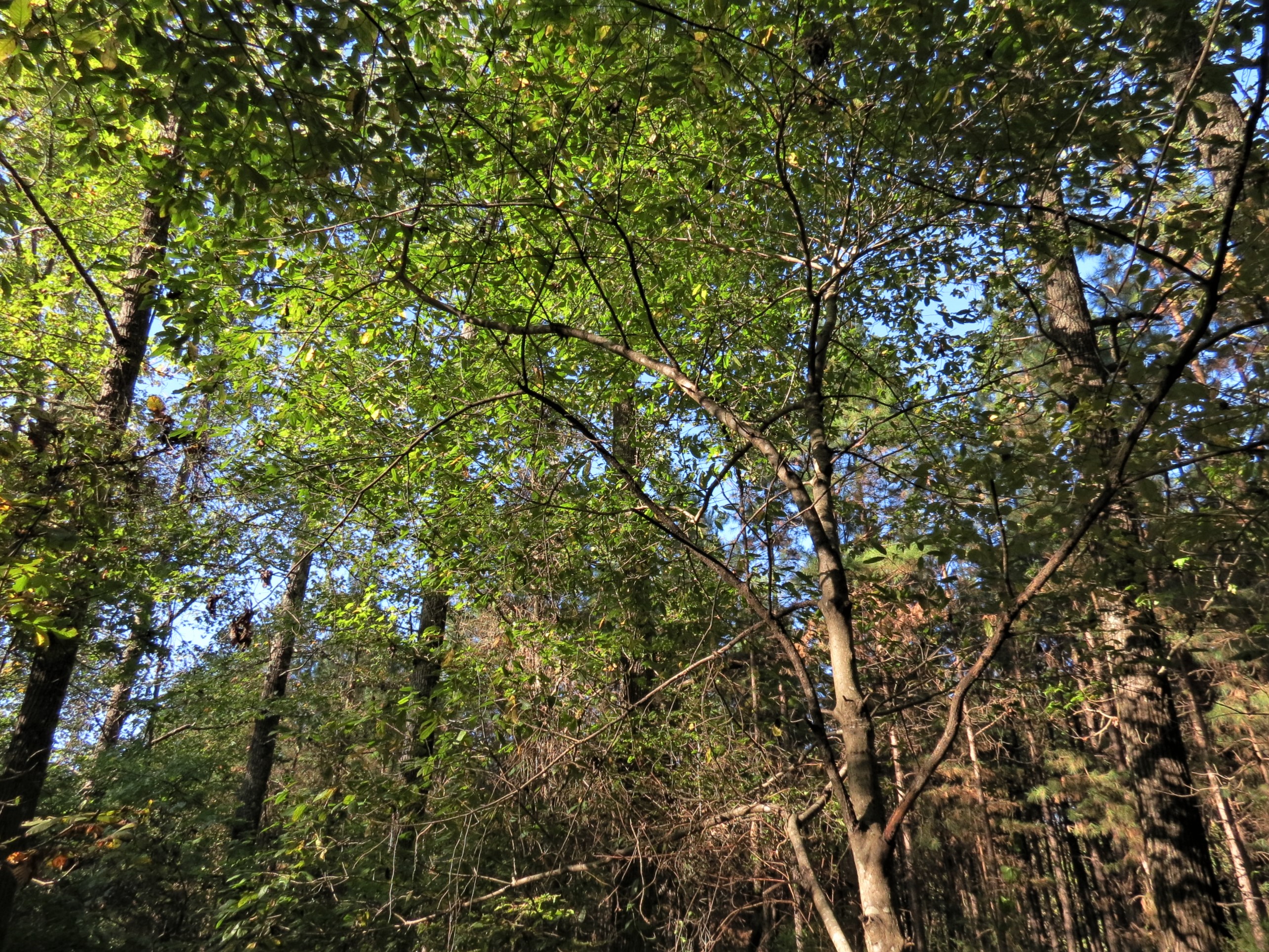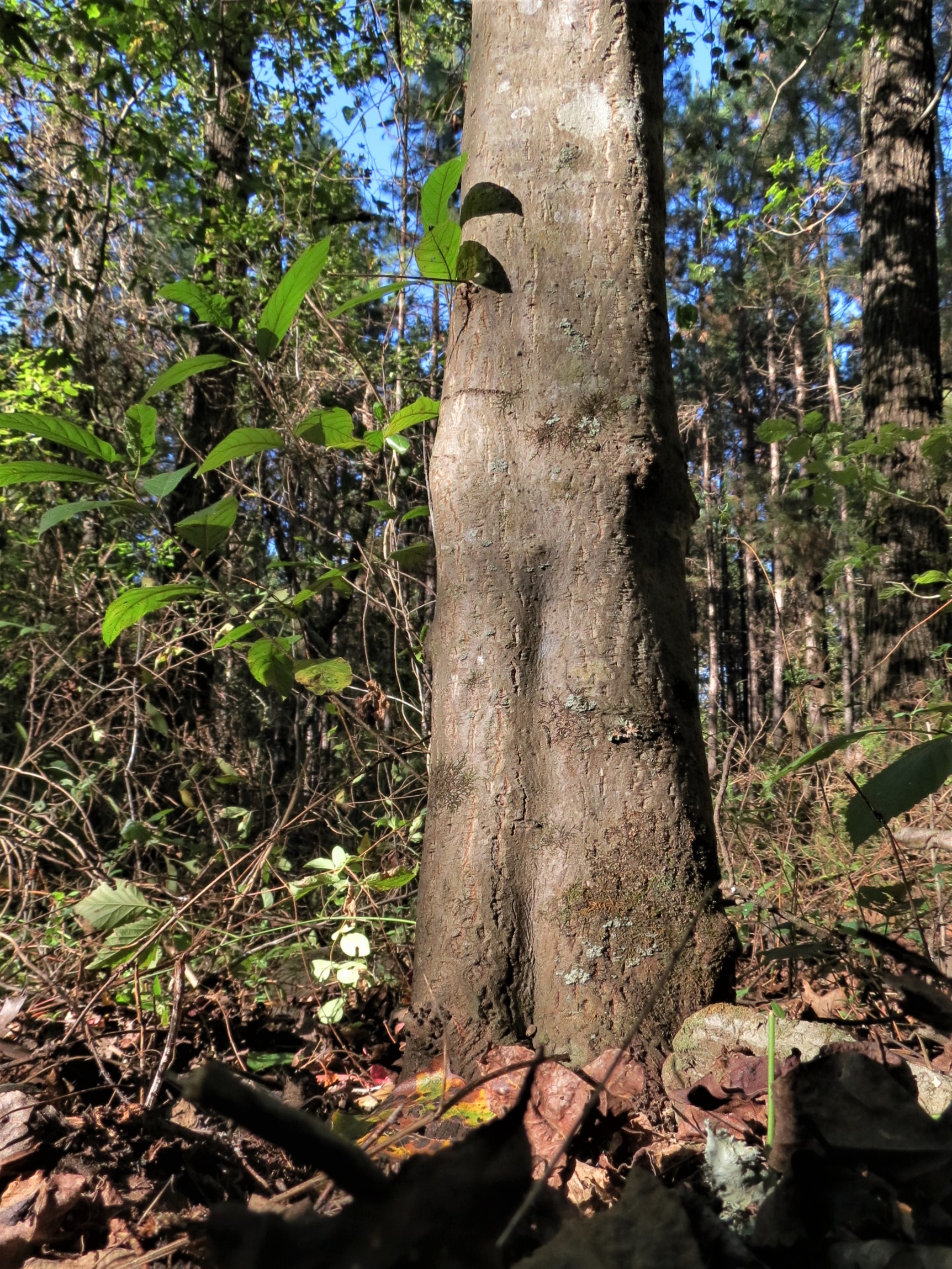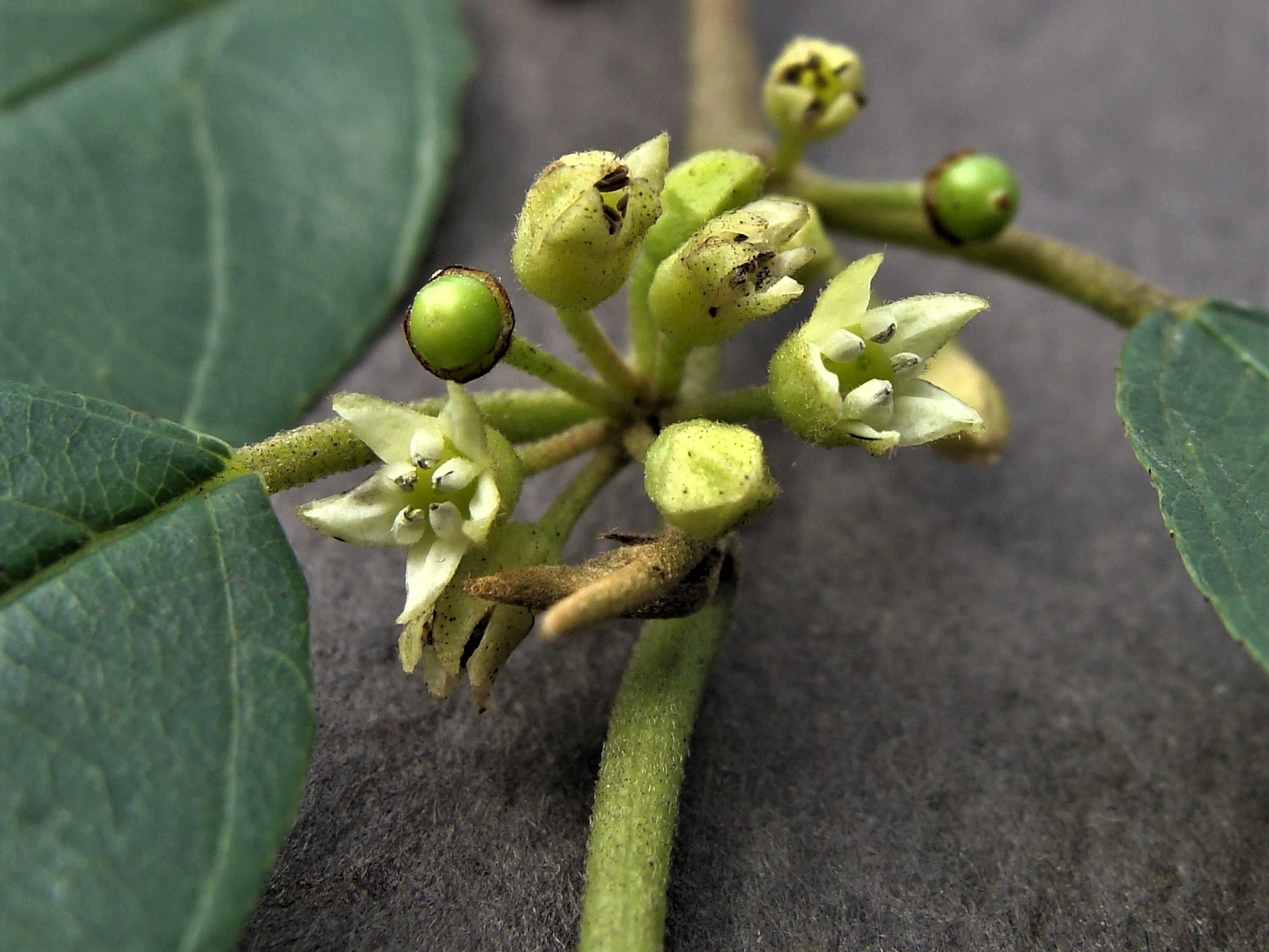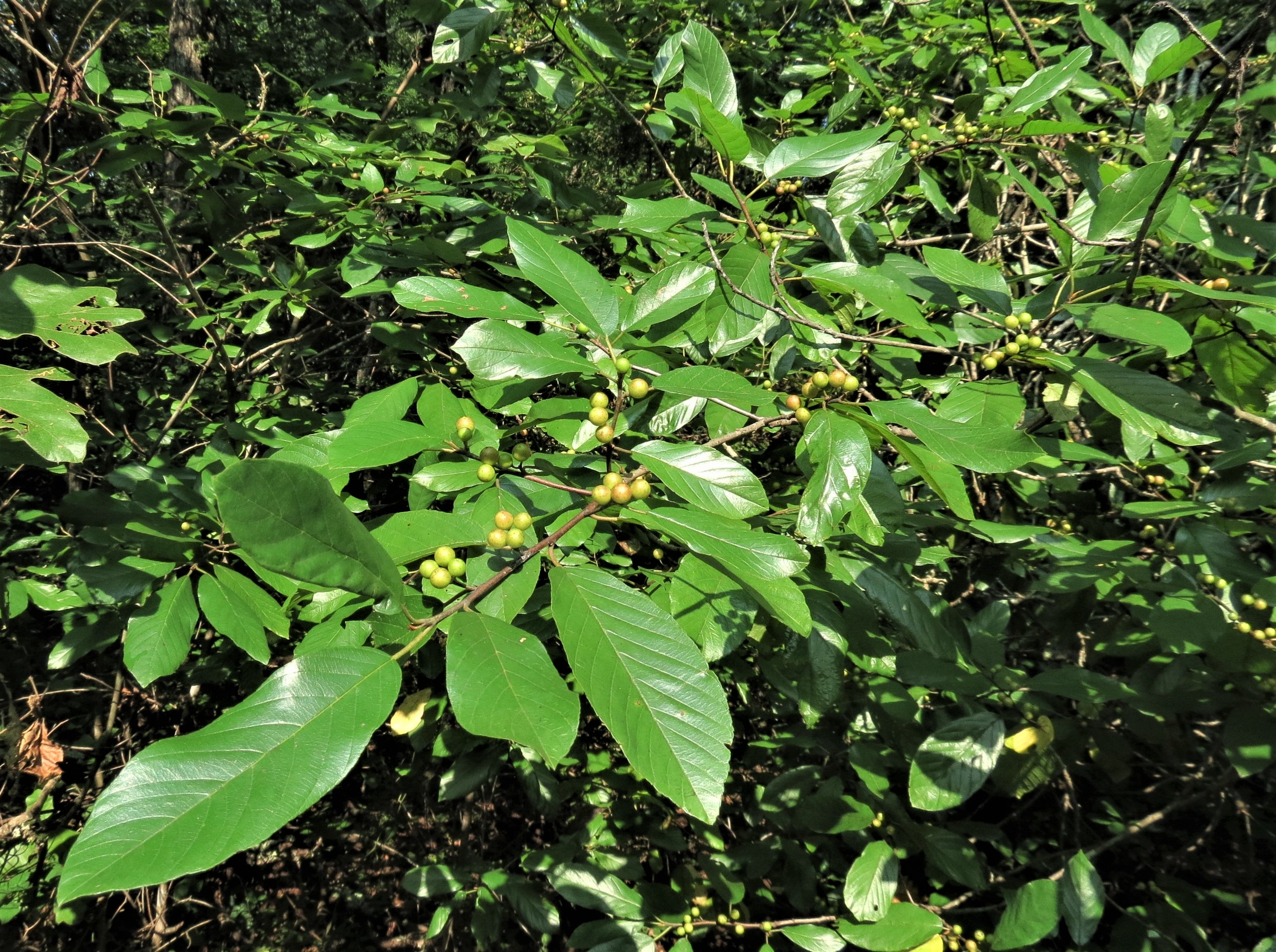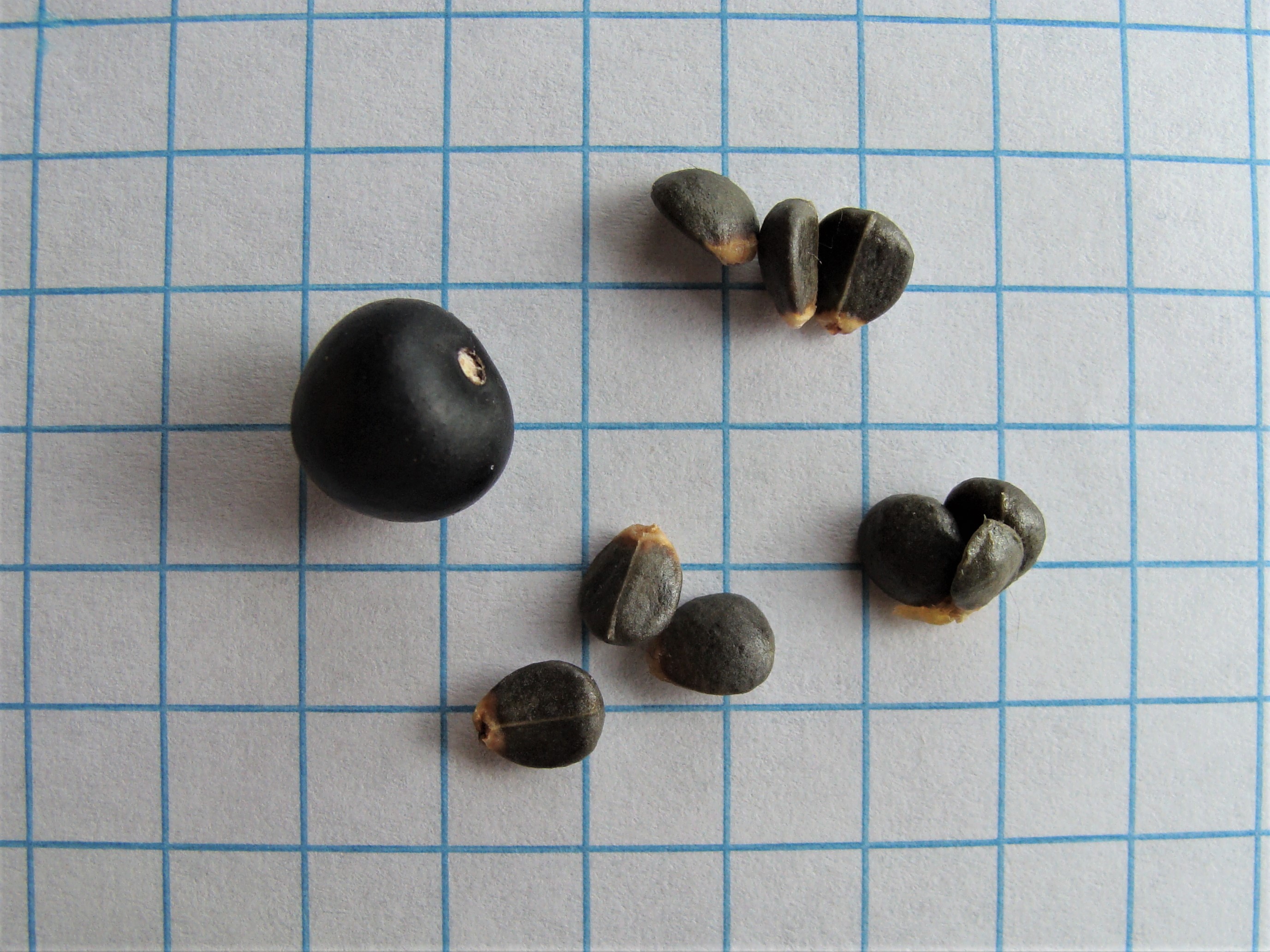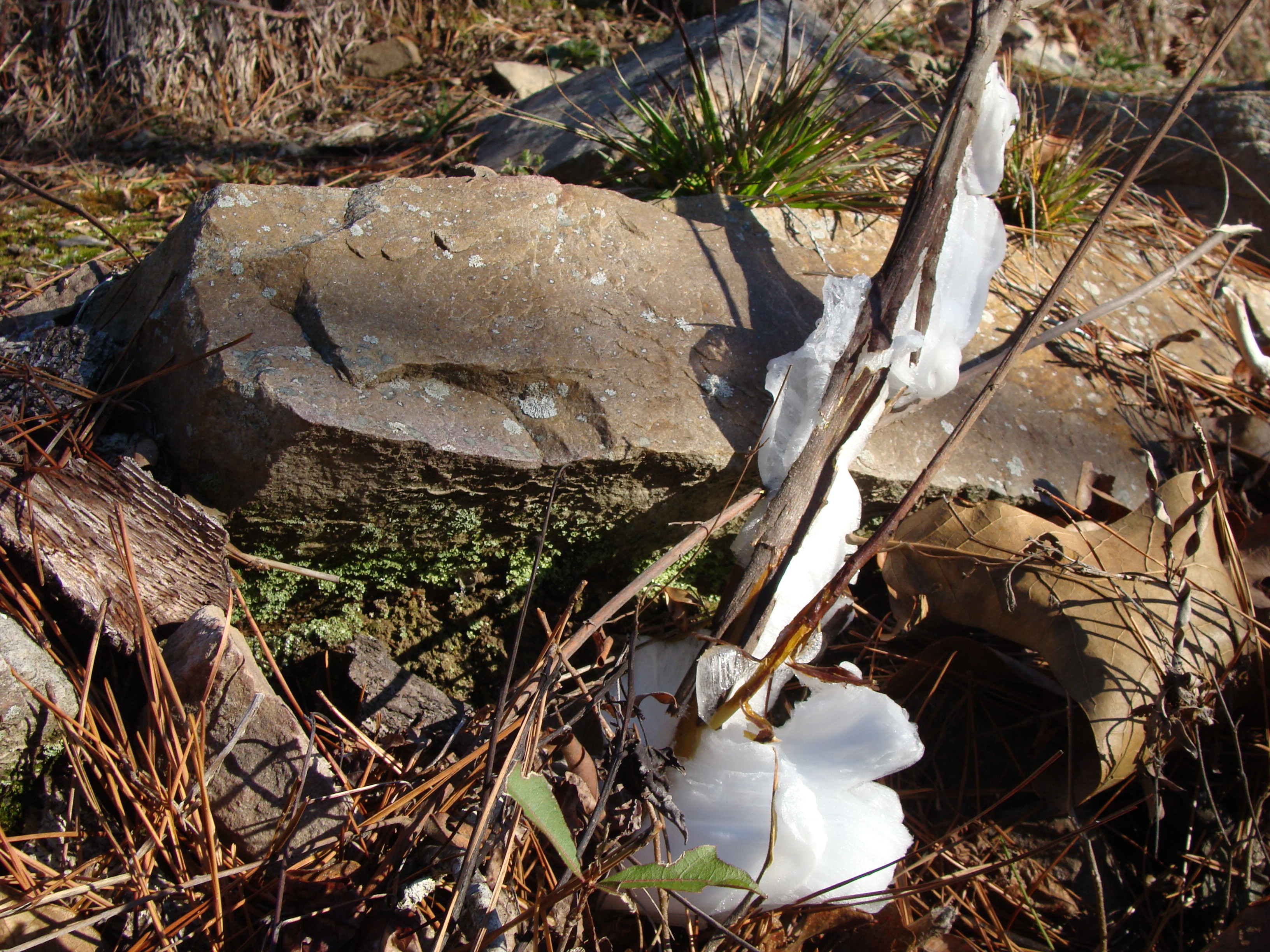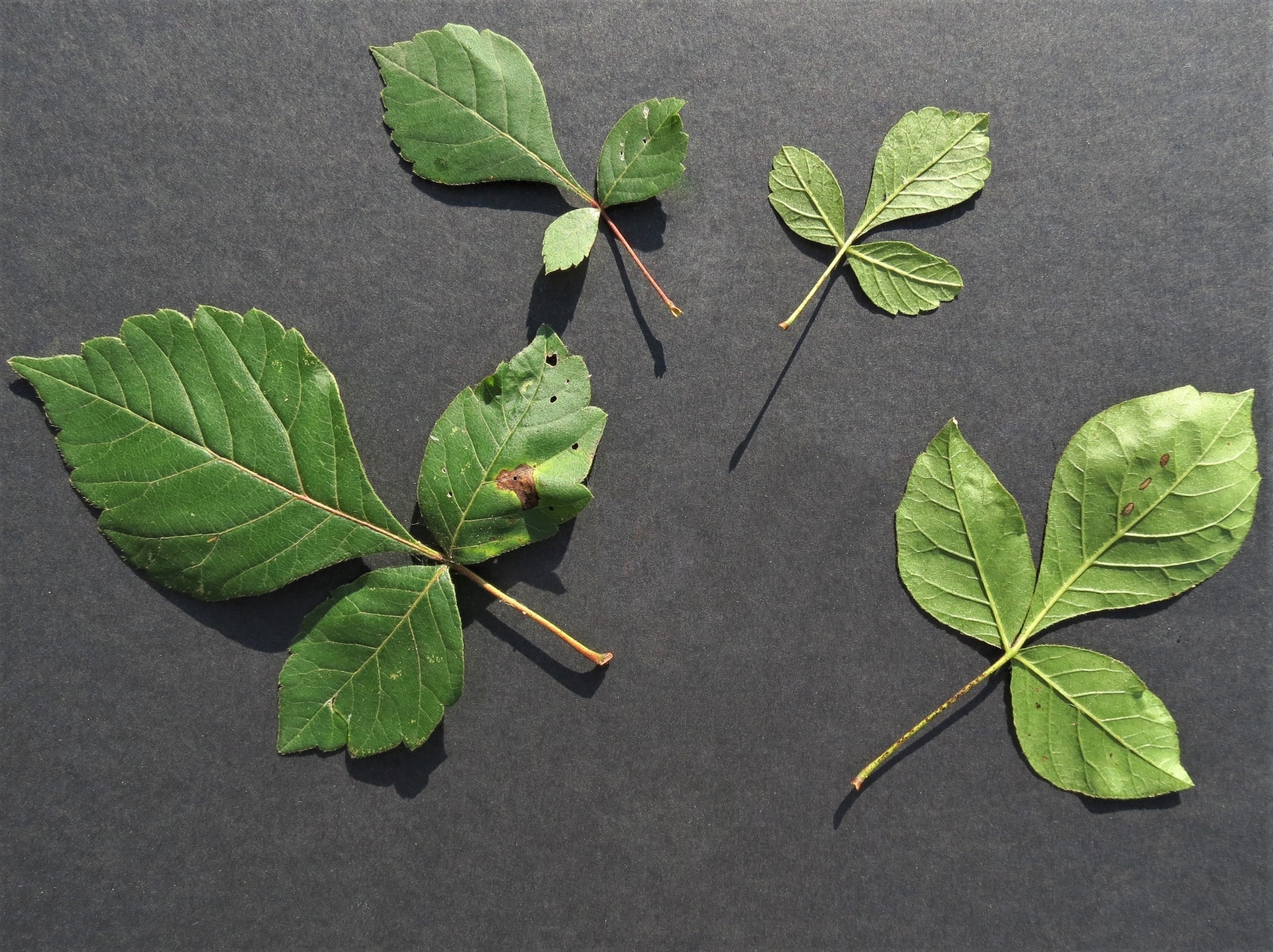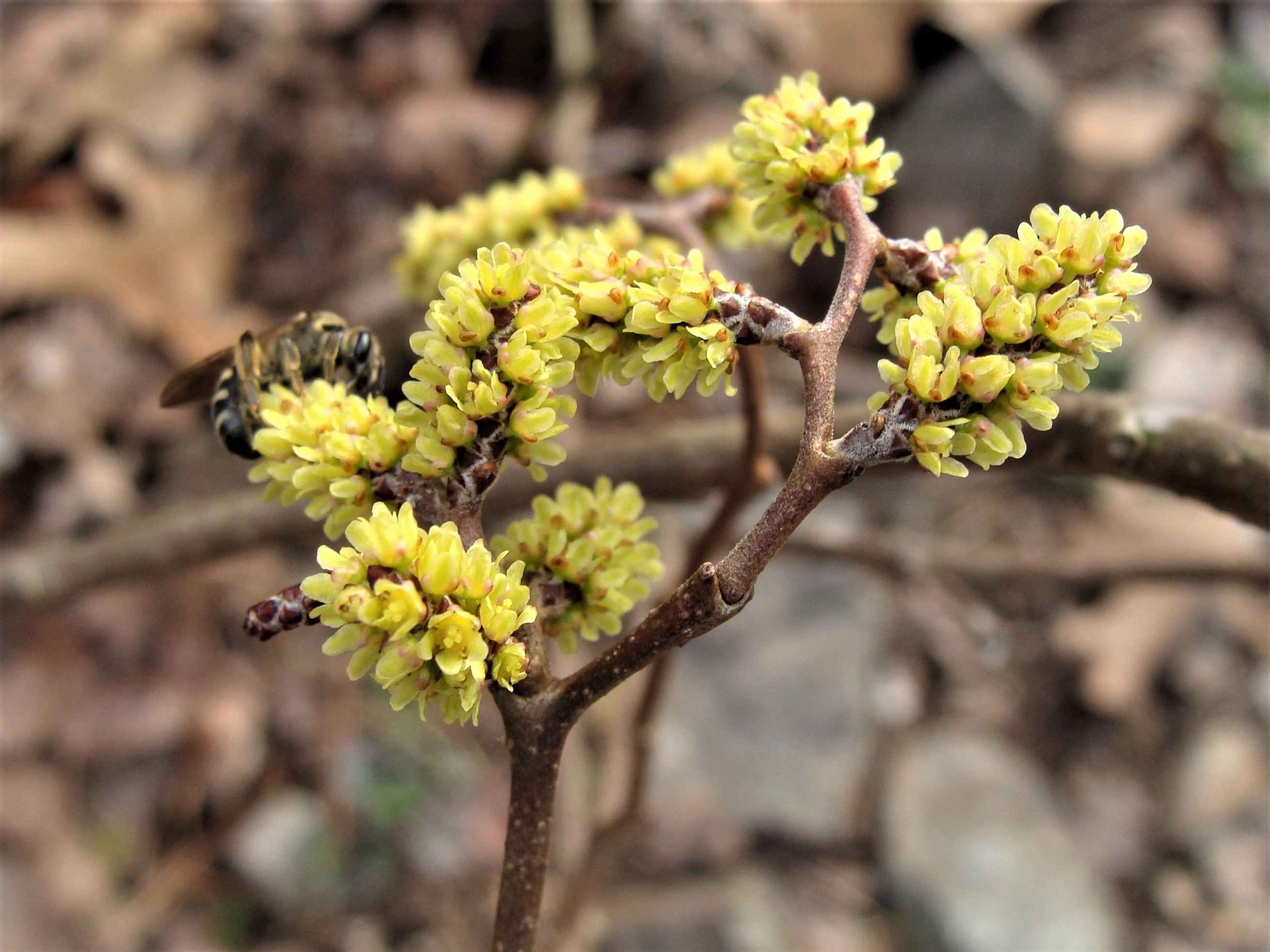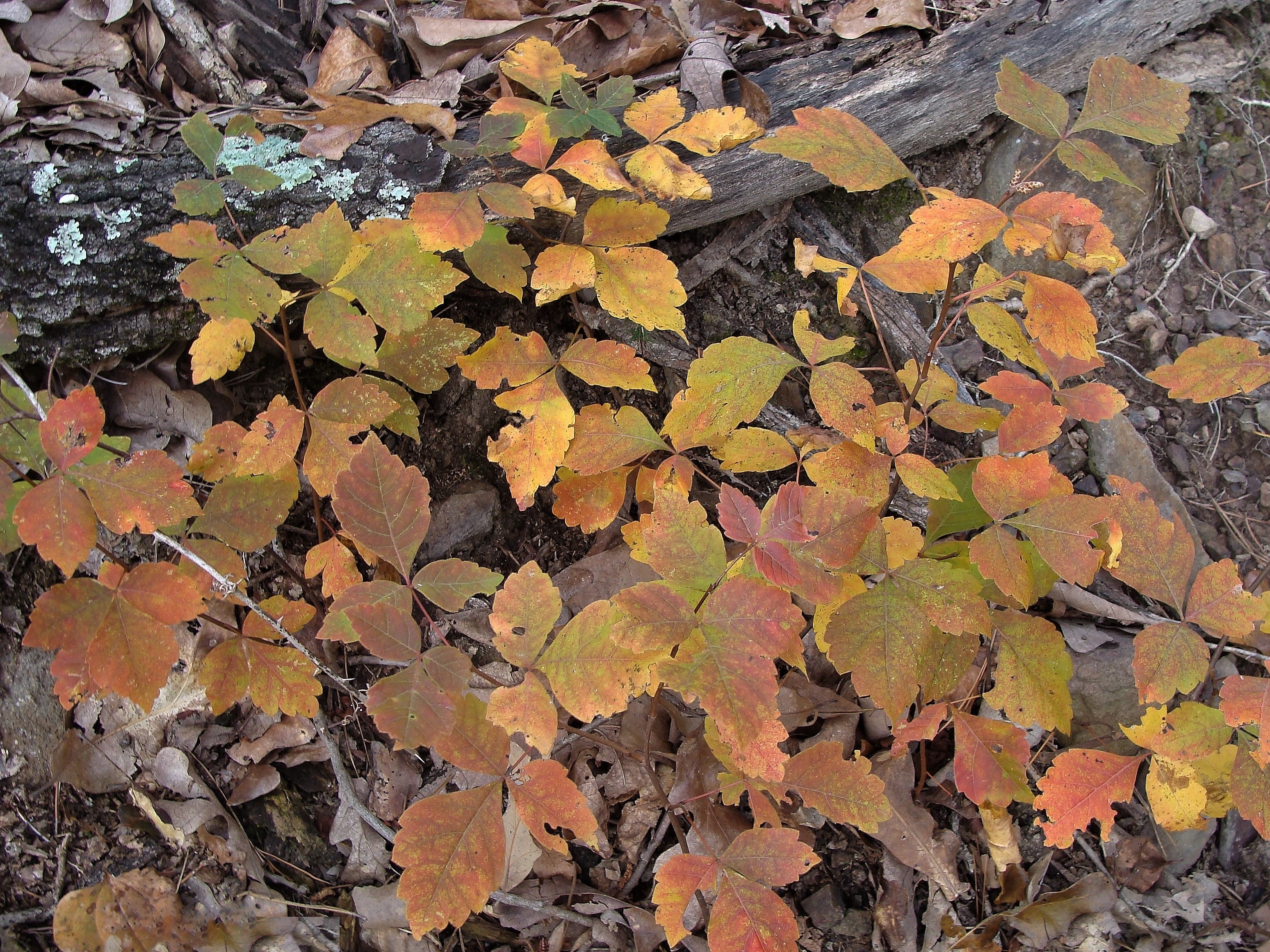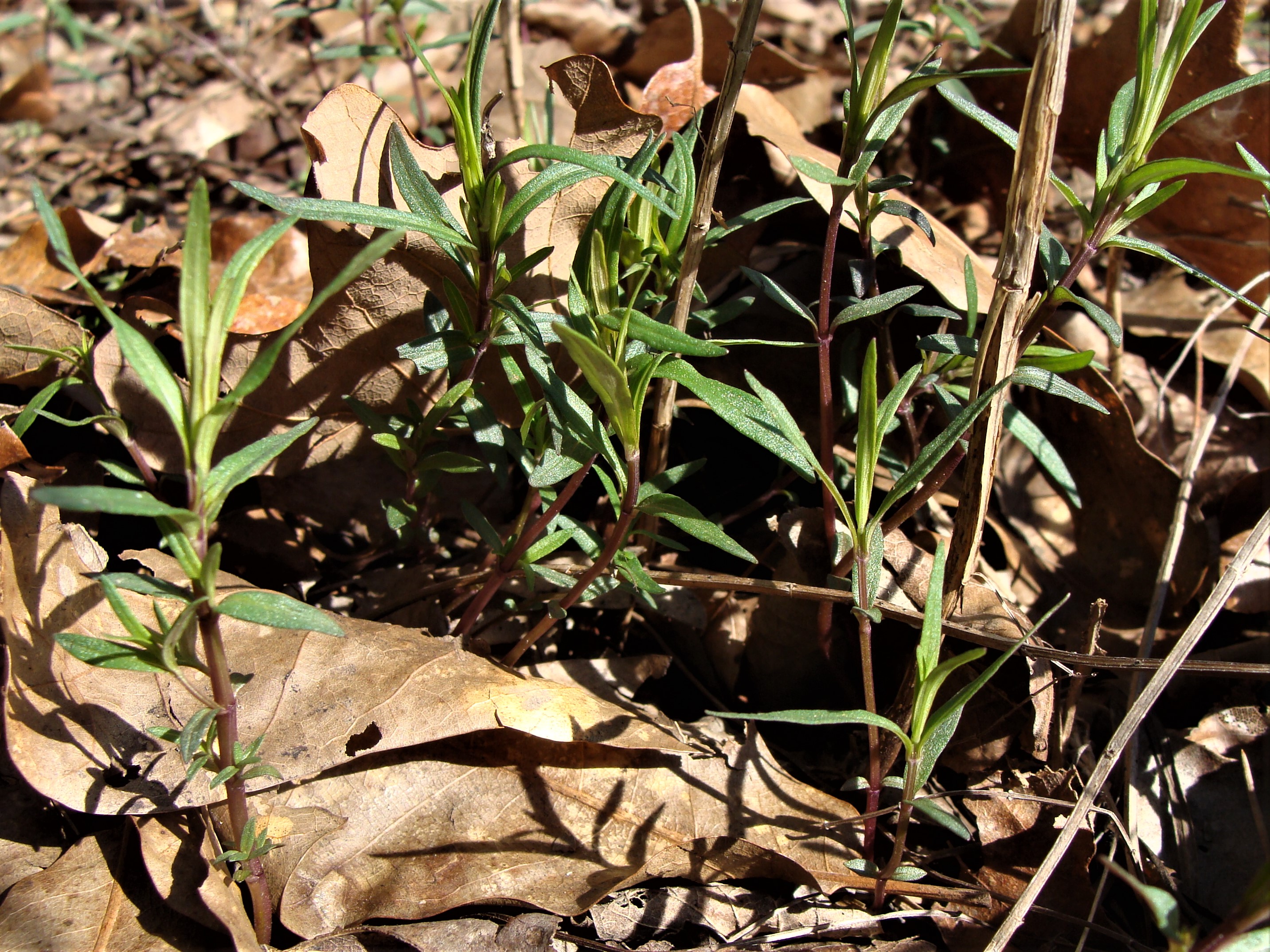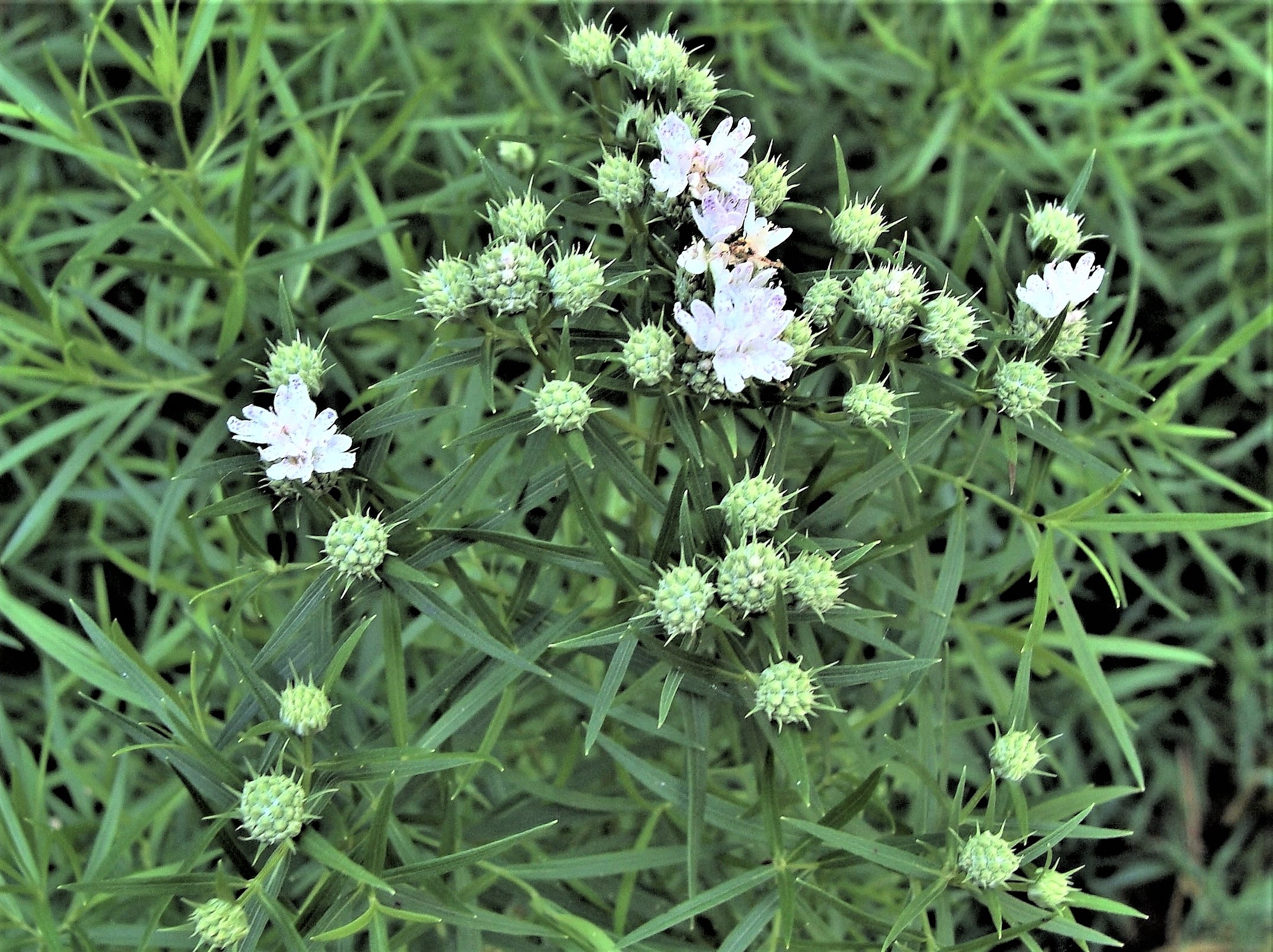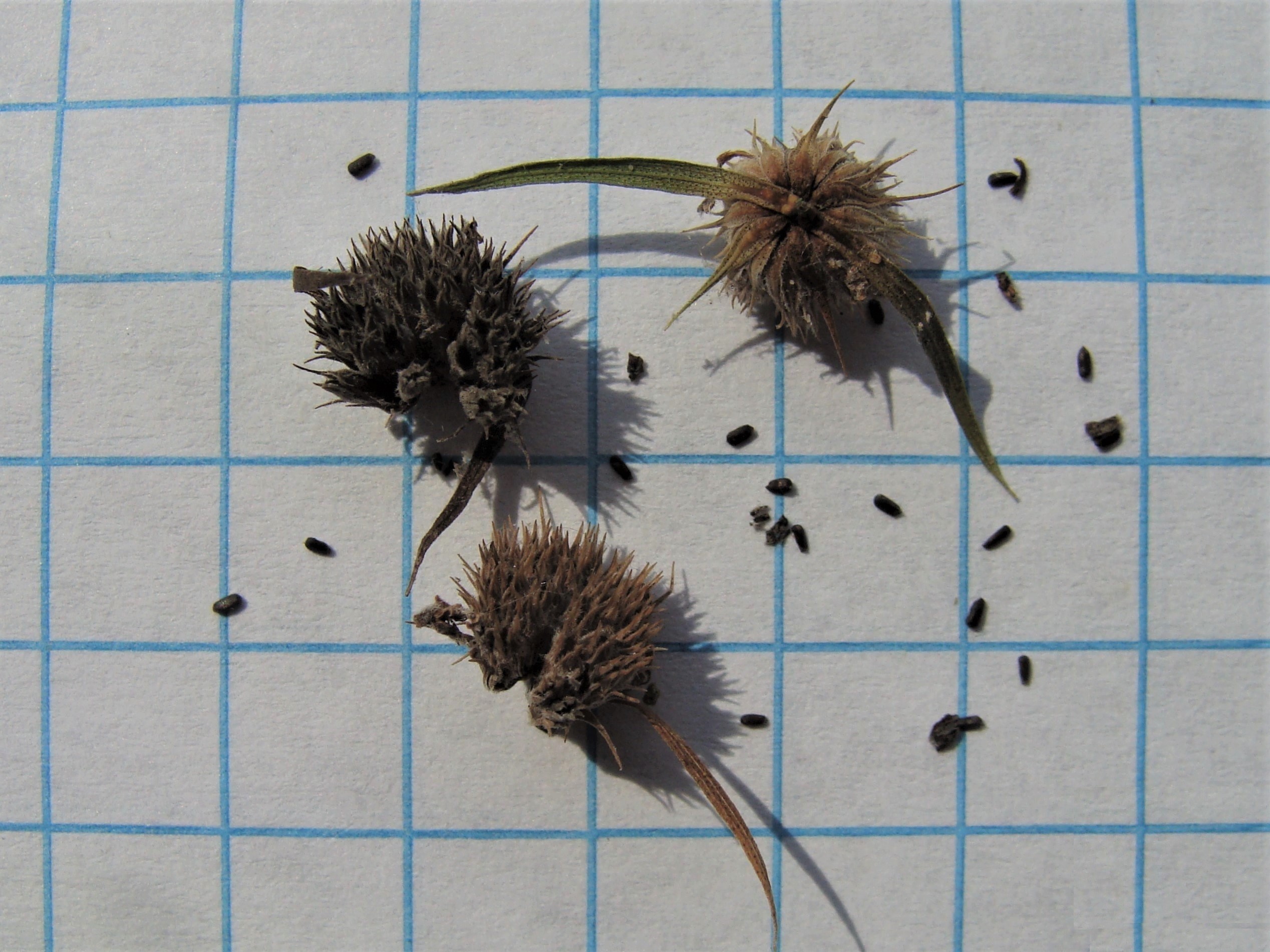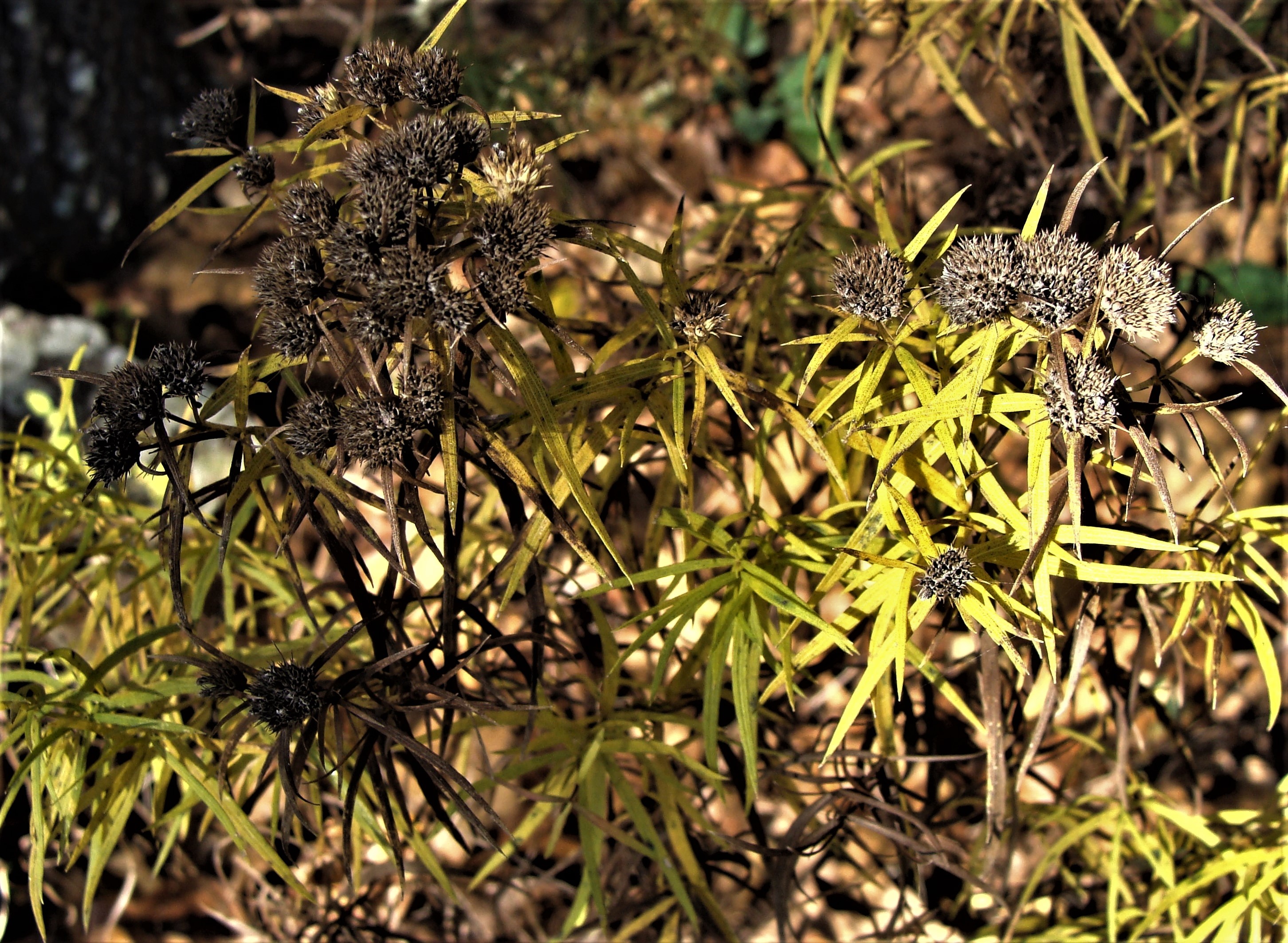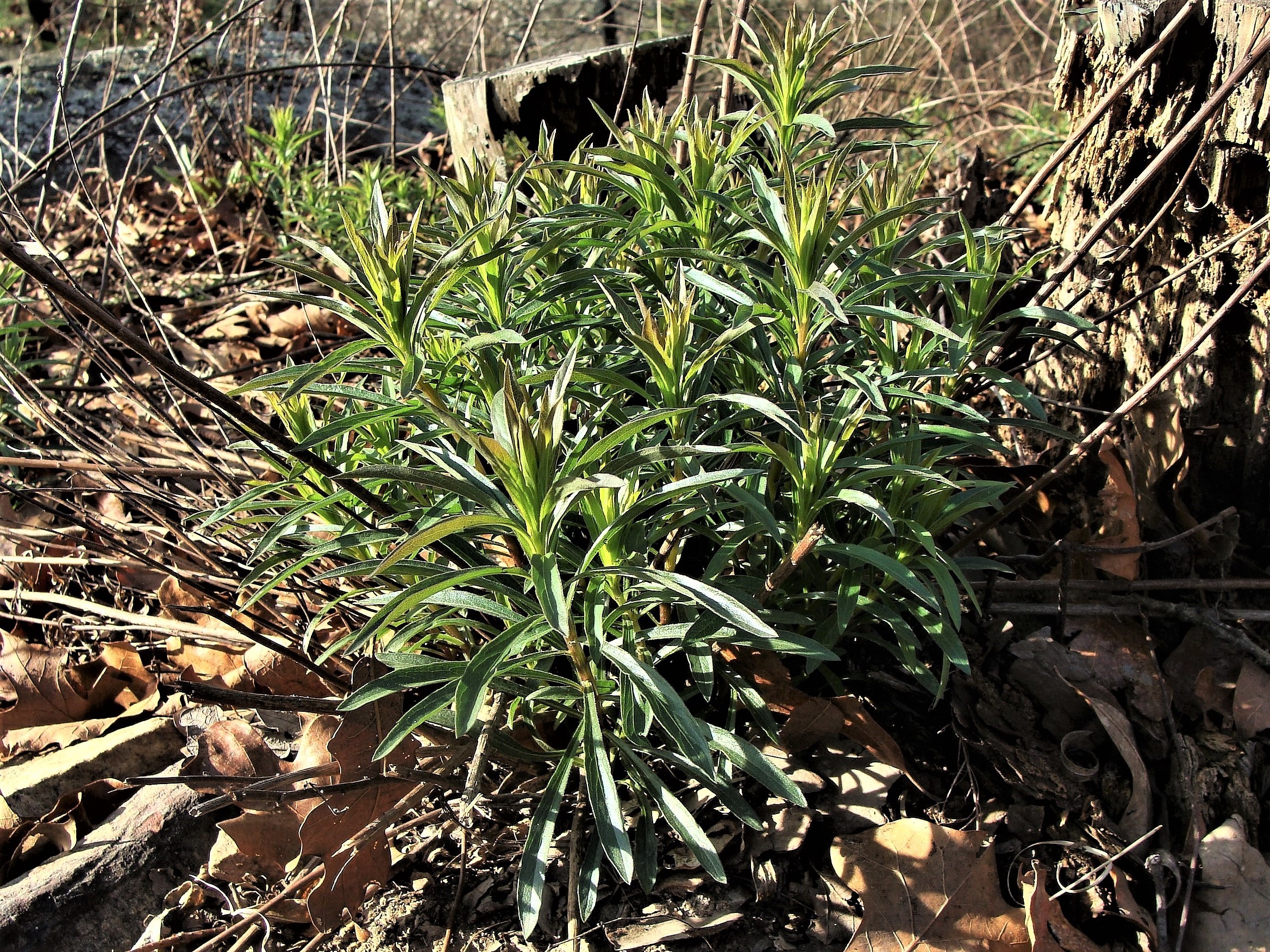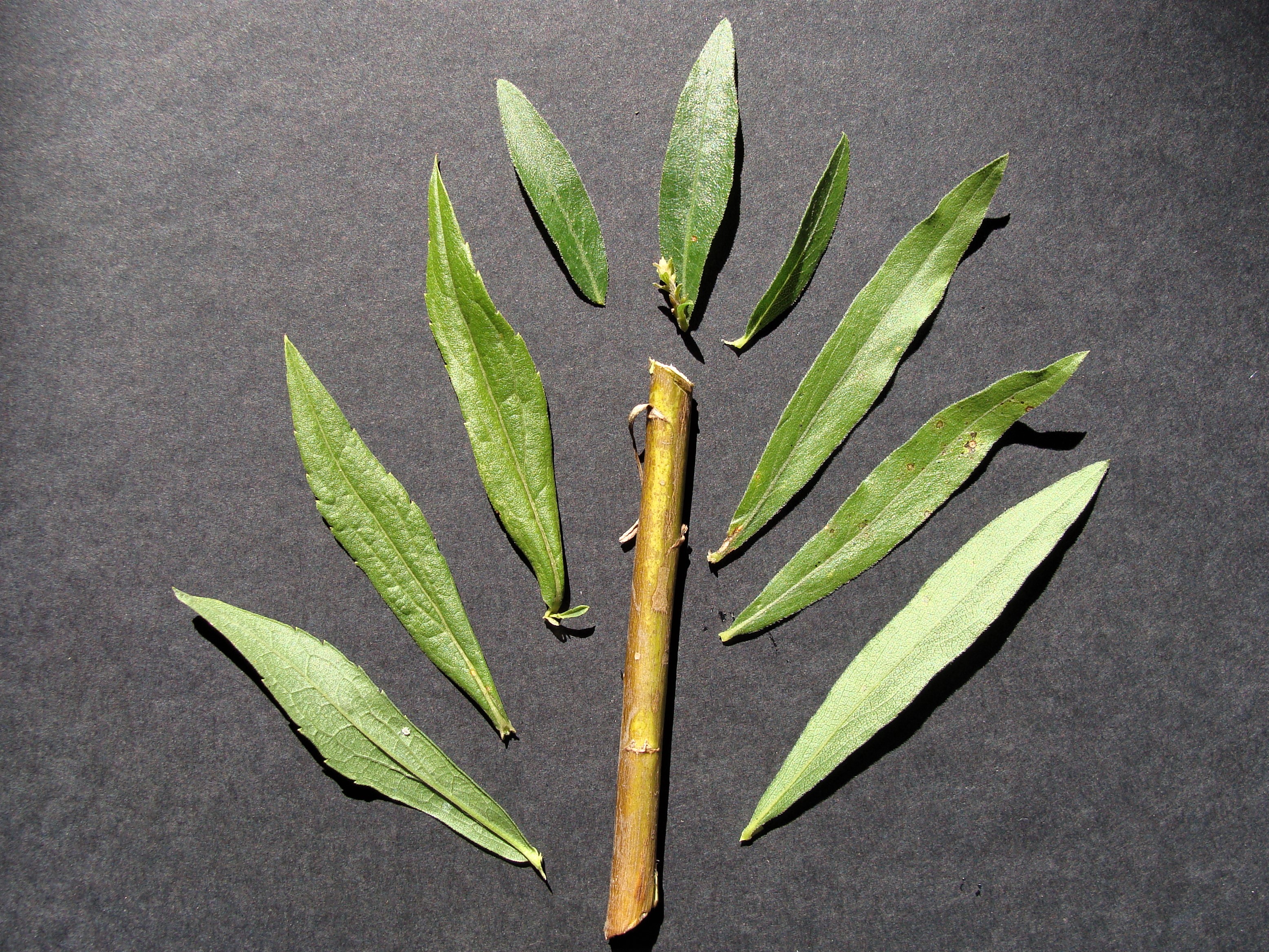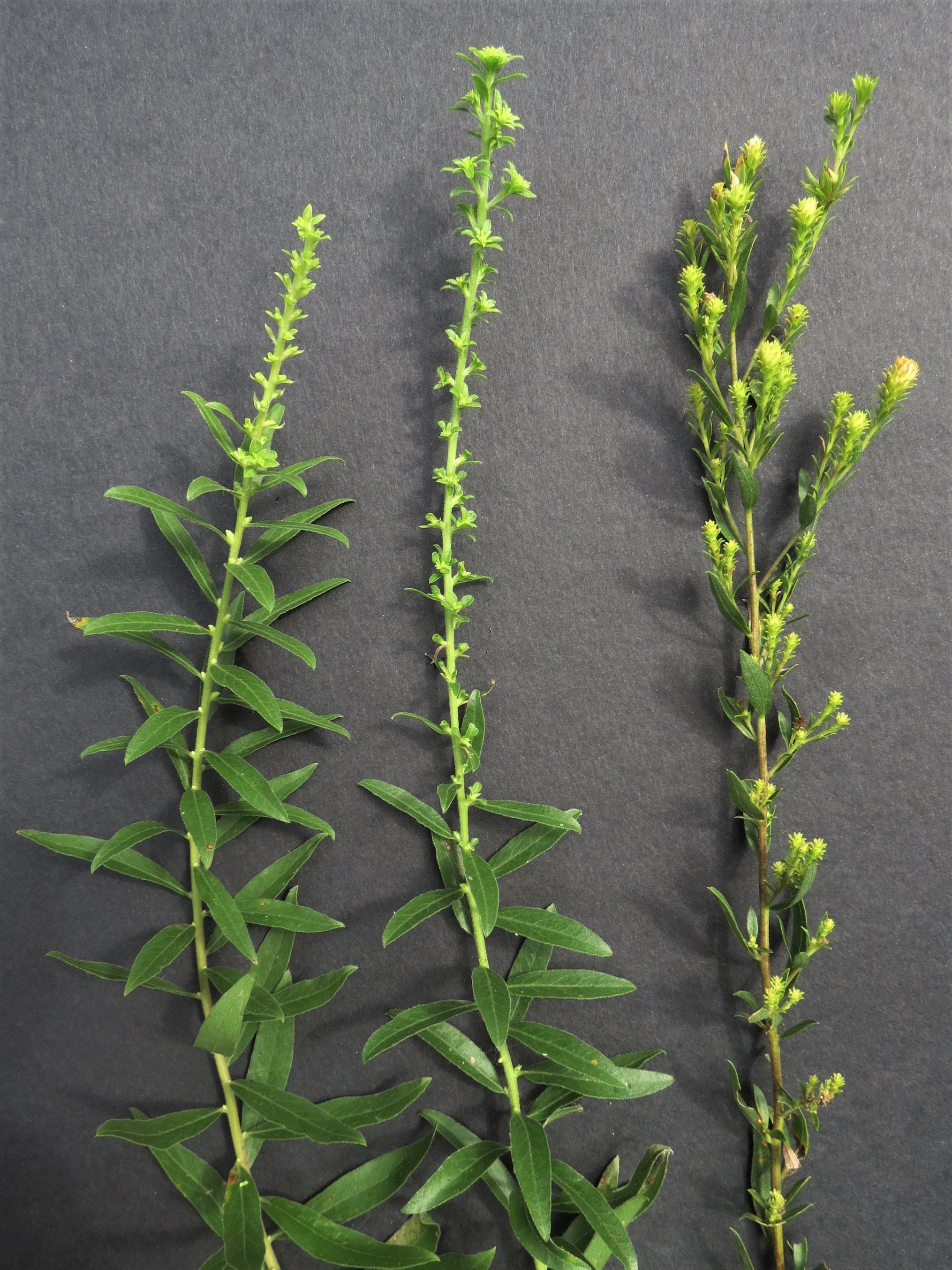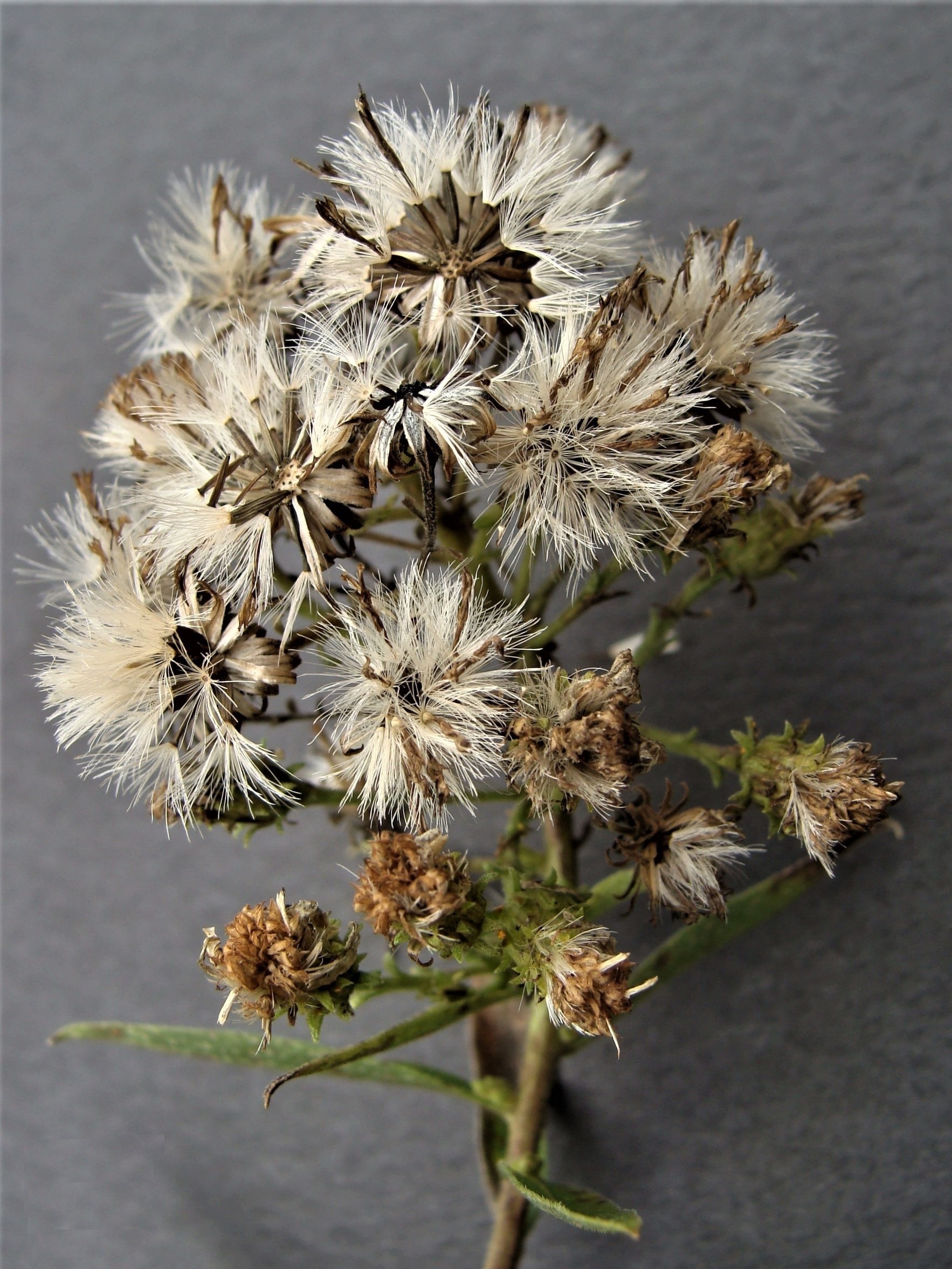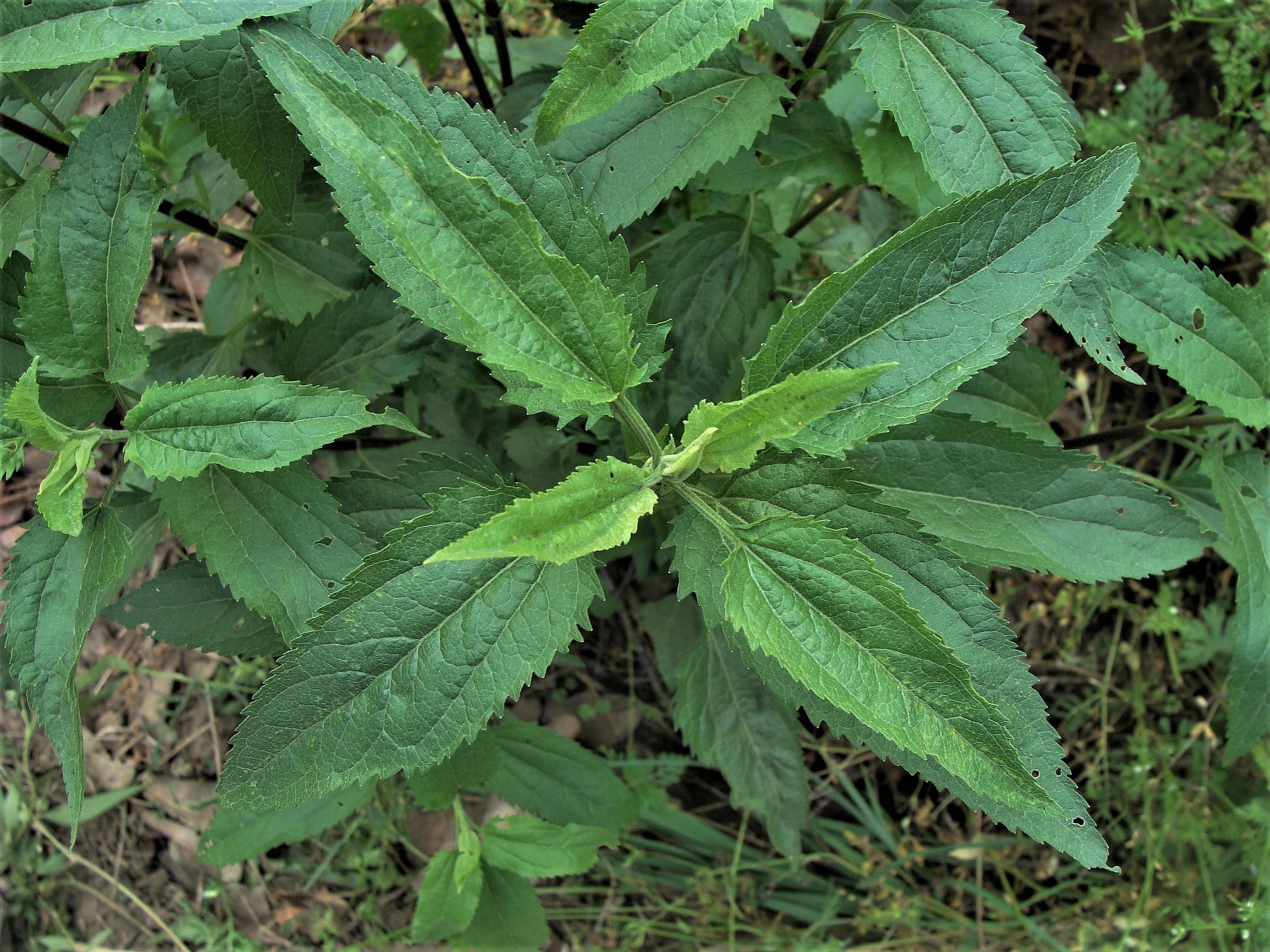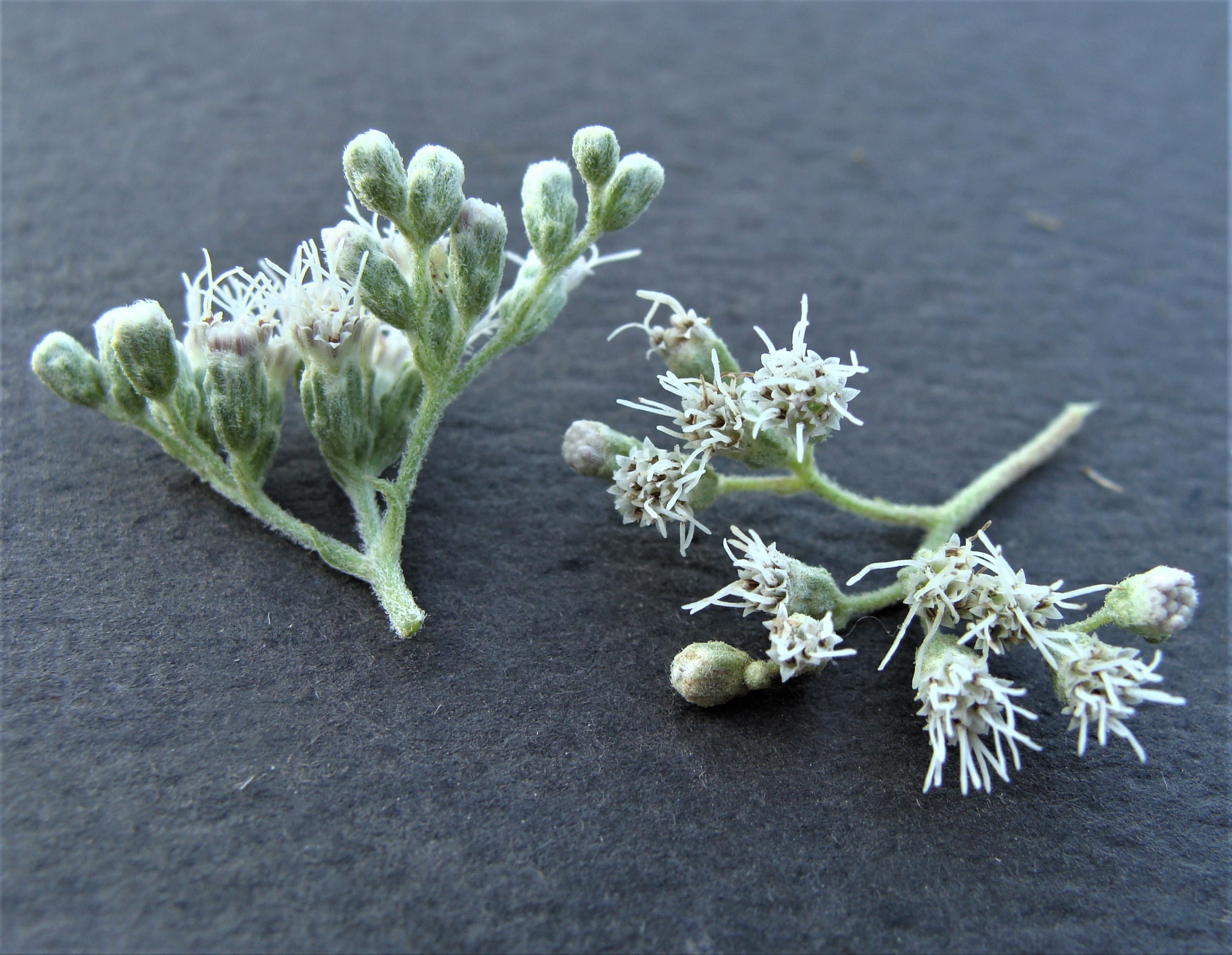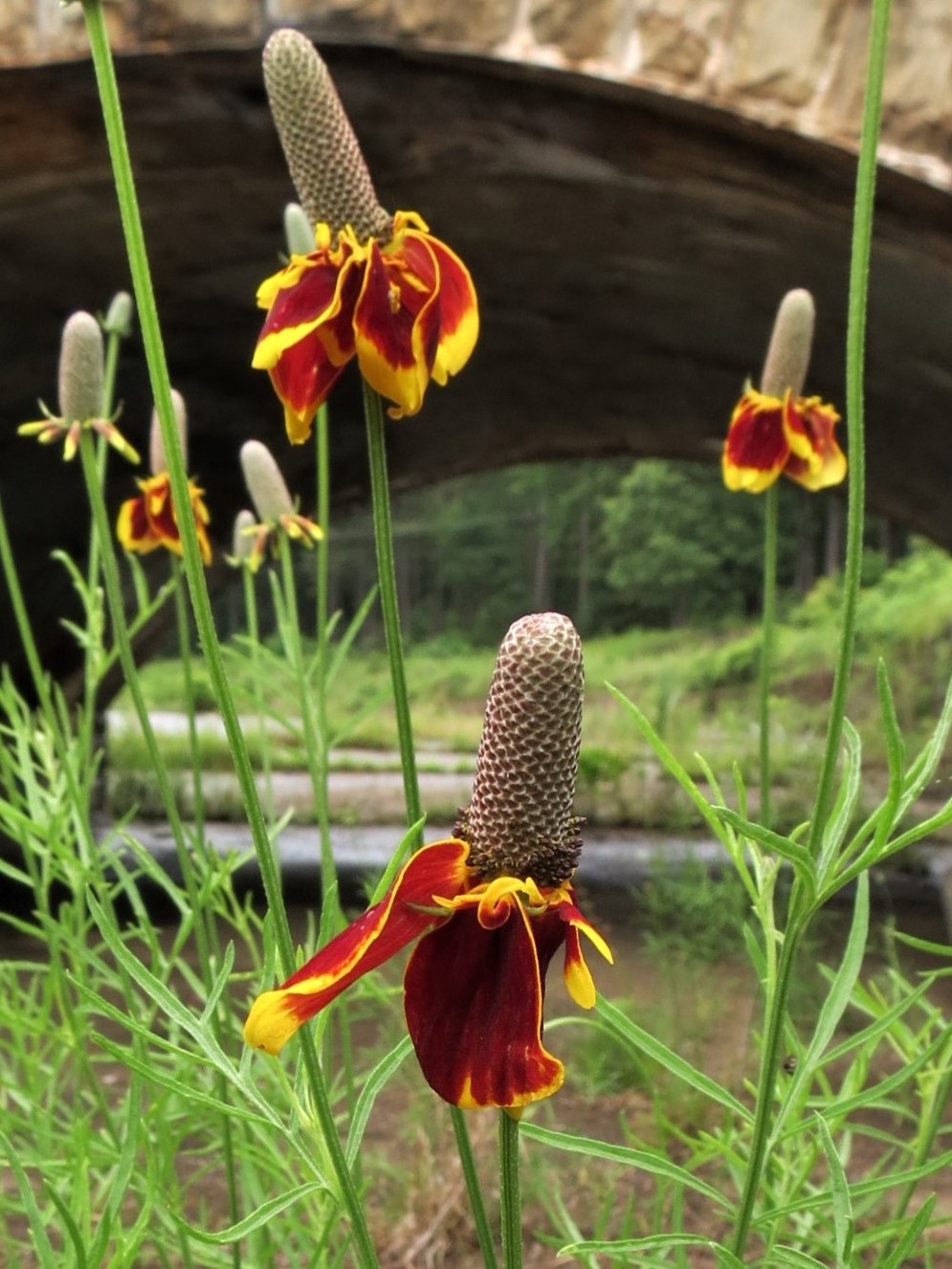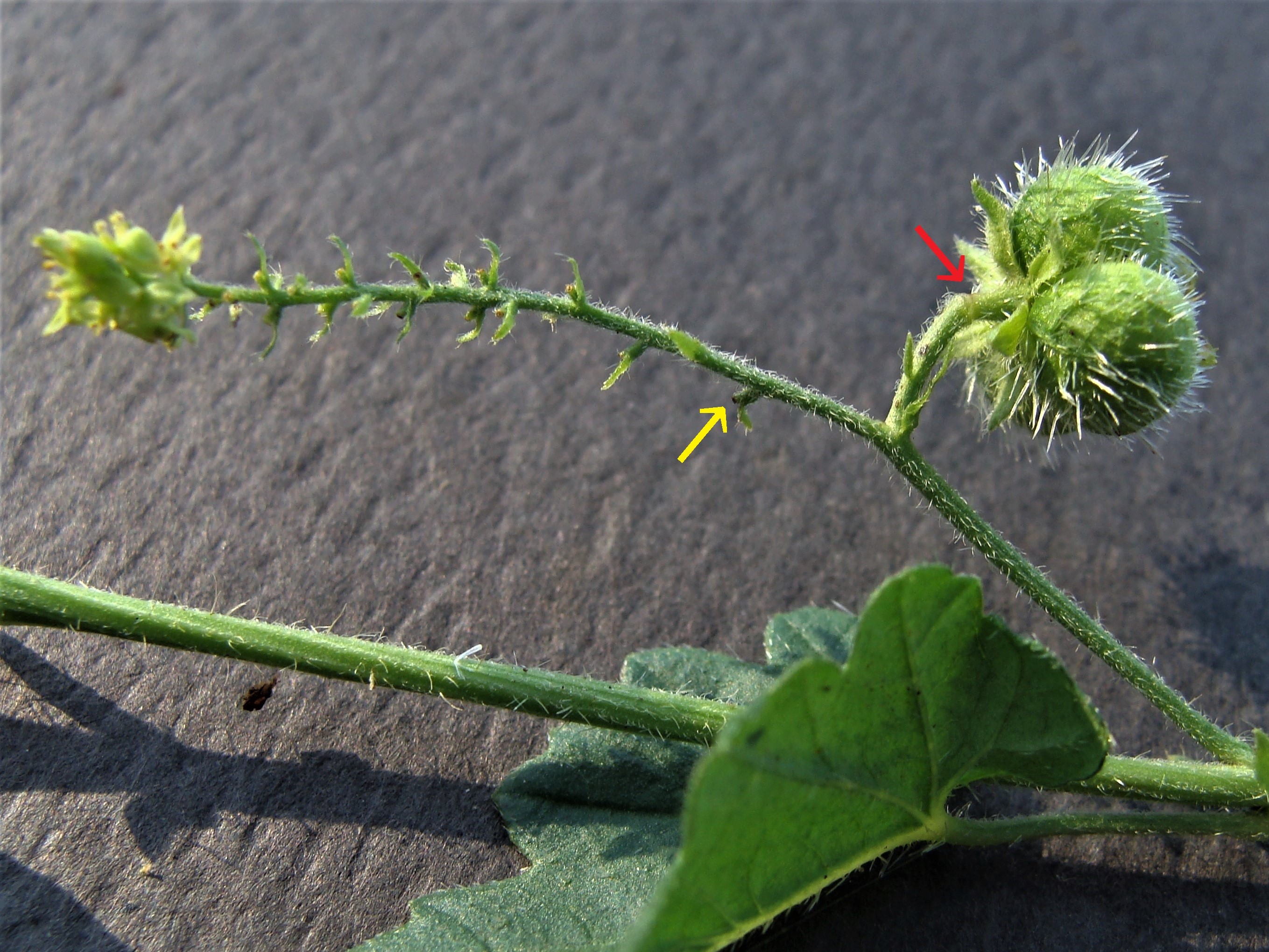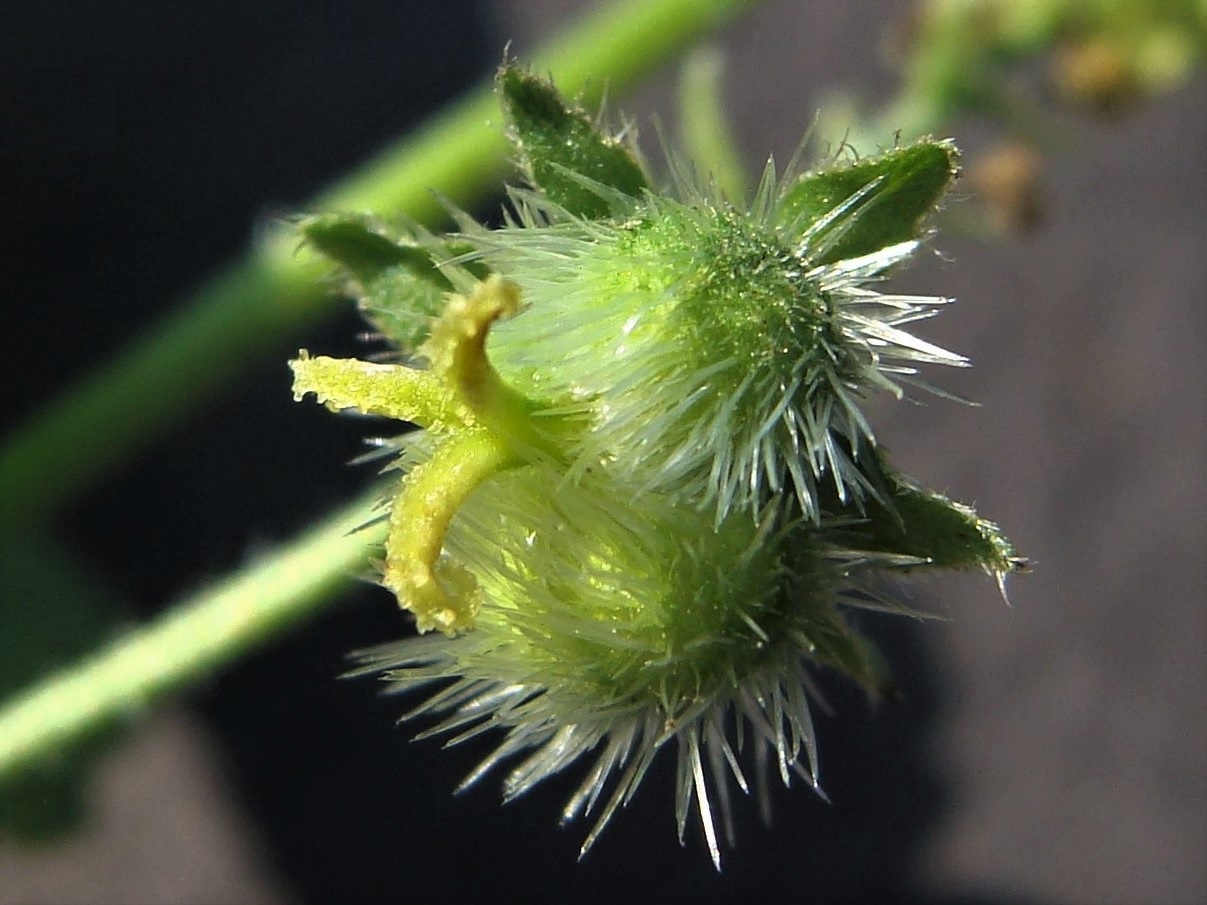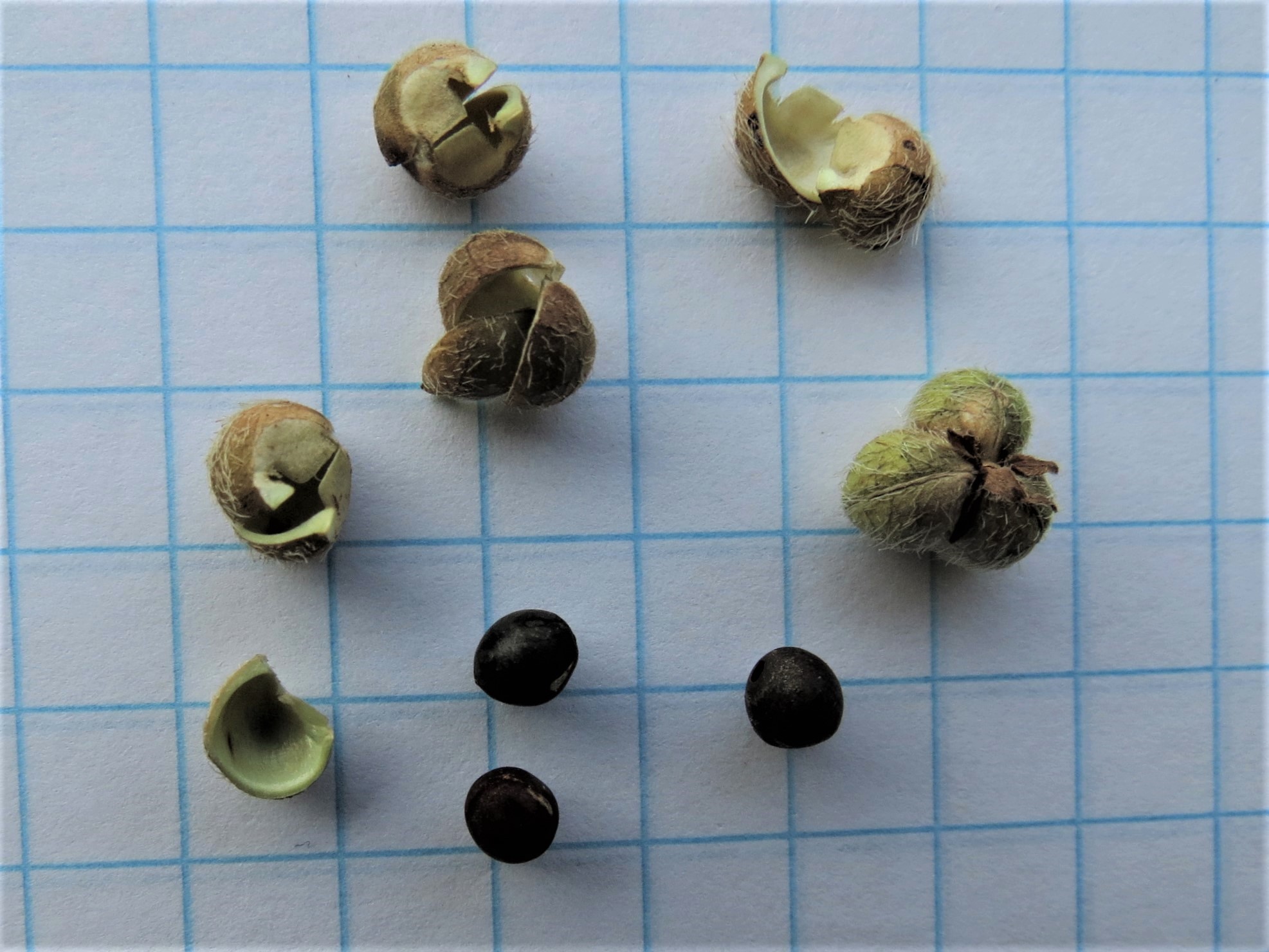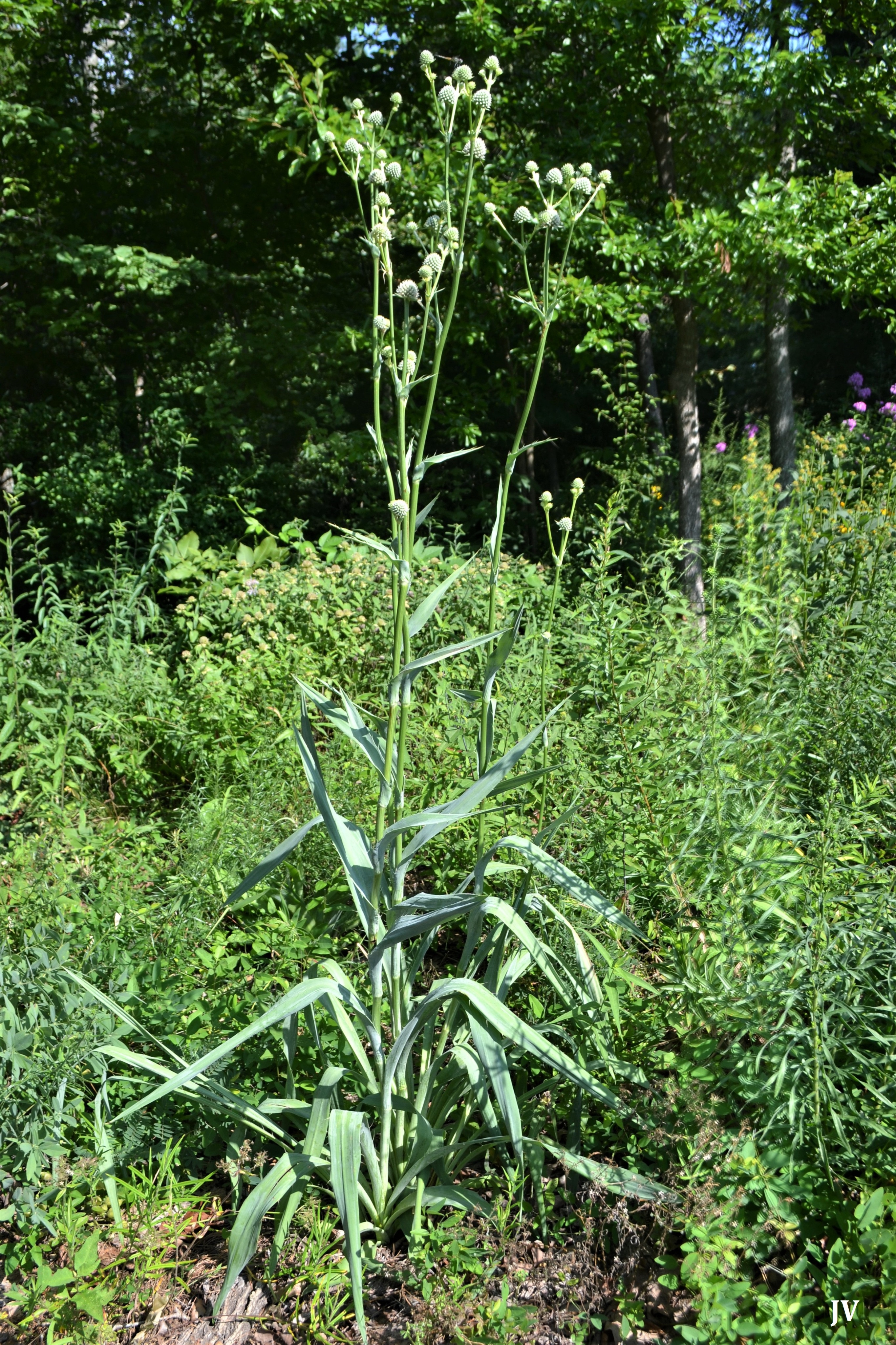Winged Sumac (Rhus copallinum*) of the Cashew (Anacardiaceae) family is a deciduous shrub or small tree that forms clonal colonies from lateral roots. Rhus is the old Greek and Latin name for sumac. The specific epithet, based on an Aztec word, translates as “resinous,” in reference to its sap, or copal, a name given to tree resin. This is a common species throughout much of the U.S., from central Texas, southeastern Nebraska, and central Wisconsin eastward. Alternate common names include Shining Sumac, Dwarf Sumac and Flame-Leaf Sumac. Habitat ranges from full to partial sun on various soils––sandy to rocky, dry to mesic––on prairies, woodland edges, fencerows, roadsides, burned areas, and abandoned fields. Winged Sumac is an early successional species and is considered to be invasive in managed, tall-grass prairies.

The parent tree of a clonal colony has a taproot with shallow lateral roots that may extend for many feet. Clonal trees, or root sprouts, grow from adventitious buds along the upper side of the lateral roots. Vegetative clones may occur as thickets or as widely scattered trees. Lateral roots remain viable throughout the short lifetime (less than 20 years) of a clonal colony. Roots that are slightly cut or flexed slowly exude a small quantity of white, resinous sap. Wood of the stems is white, surrounding a tan pith.
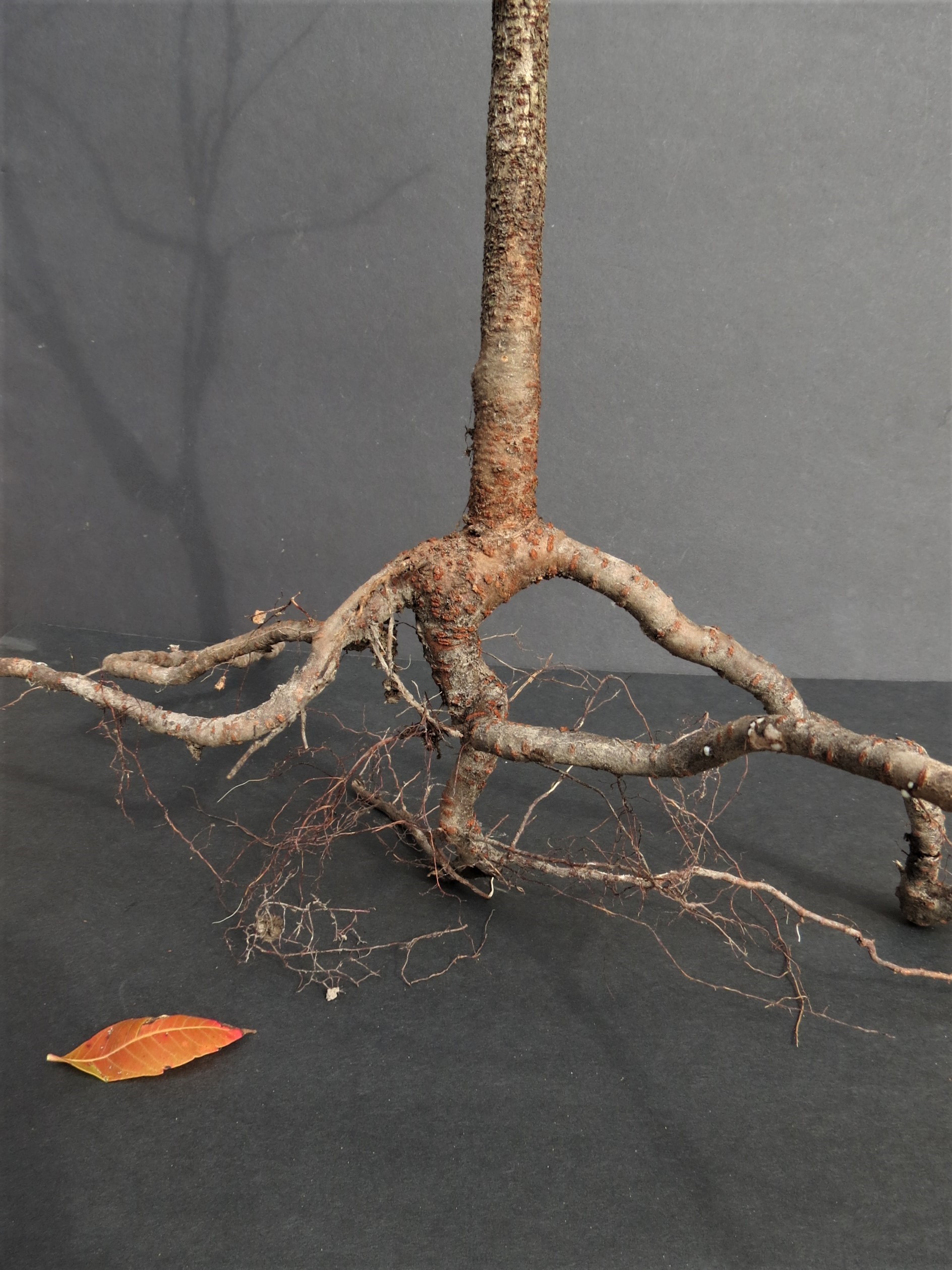
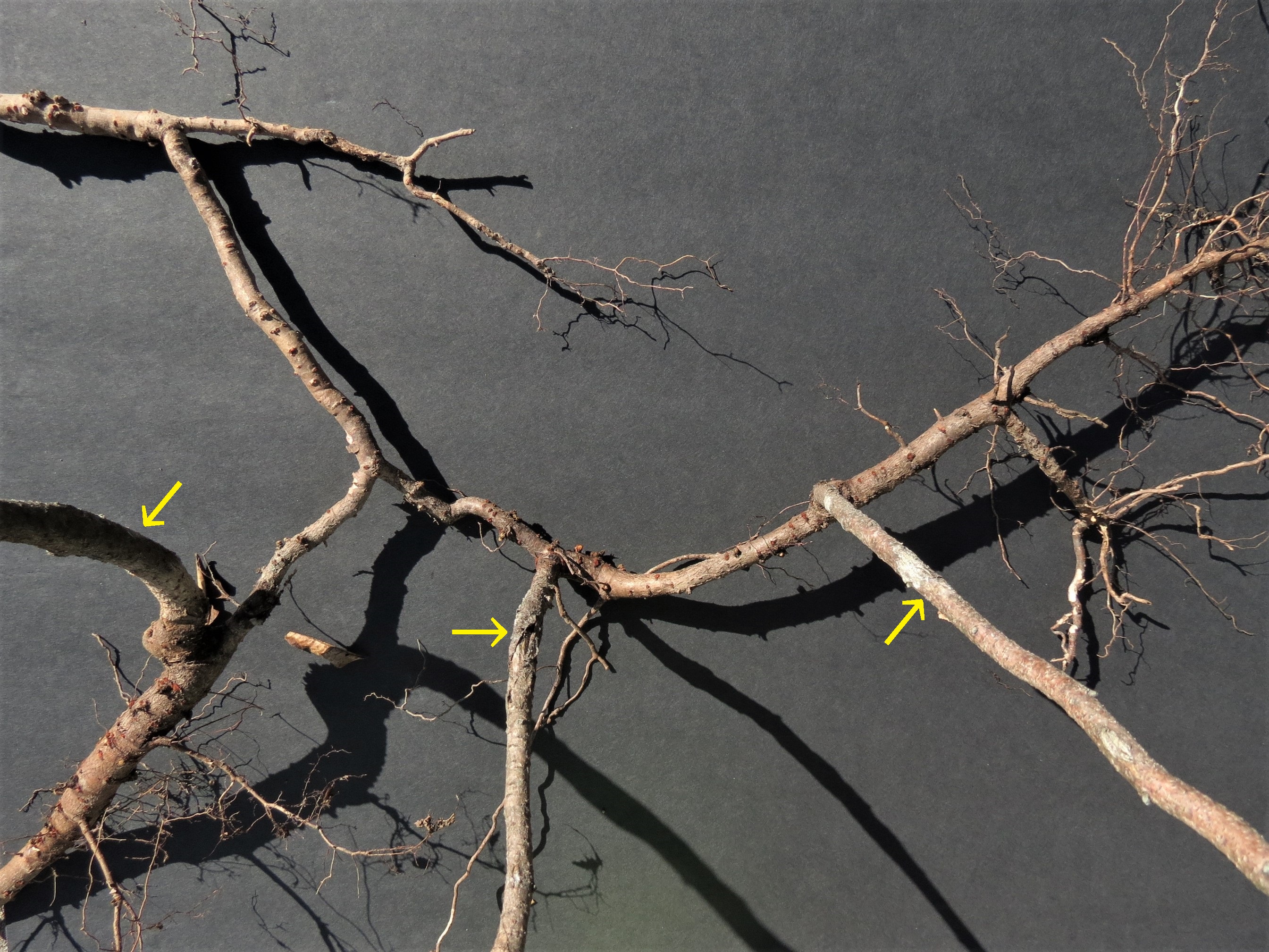


Stems (trunks) of clonal trees in their first one to two years of growth are straight and unbranched, elongating from the terminal bud only. By the third year, lateral stems (branches) grow from one to several of the uppermost axillary buds. When a clonal tree is mature enough (fourth year?) to produce an inflorescence (always terminal), lateral buds immediately below the inflorescence produce new branches. Growth rate of stems varies widely, from less than an inch to several feet, as determined by specific site conditions (soils, moisture, shading) and the age of the clonal tree. Mature trees in an open space have a broad, rounded top, while crowded trees are slender with lower branches lost due to shading. Trees typically reach a height of 10 to 12 feet, but may reach 30+ feet. Entire clonal colonies die when shaded by a closing forest canopy.

New, pale green stems are densely covered with velvety white hairs (puberulent) that extend onto the petioles (leaf stalks). This pubescence persists as stems age and darken. Small dark lenticels (air pores) on current-year’s stems become more numerous from year-to-year, giving the thin, gray to reddish bark of larger trees a rough, pustulate appearance. Trunks often have a few large white splotches.

The alternate, odd-pinnately compound leaves bear 5-25 leaflets. Leaves grow to 12 inches long (including a 2½ inch petiole) and 2 inches wide. Petioles may be reddish. Sessile to sub-sessile leaflets, to 3½ inches long and 1½ inches wide, are lanceolate to ovate-lanceolate, with a rounded to attenuate base and acute or acuminate tip. Leaflets can be asymmetric across the midrib with the upper half wider. Margins are typically entire (smooth), though slight serrations may occur distally. The leaf rachis––the midrib between the paired leaflets––is prominently winged, the wings from ⅛ to ⅜ inch wide. A stubby wing also occurs at the base of the terminal leaflet. Leaflets and wings are dark, shiny green above and dull, yellowish green beneath. Upper leaf surface is mostly glabrous, the lower surface densely pubescent with short spreading hairs. At the end of the growing season, small axillary buds for next year’s new lateral branches are somewhat obscured by slightly elevated, crescent-moon-shaped leaf scars.


In June and into July, terminal buds produce large, upright, conic, densely pubescent, branching panicles. Flowers are closely packed. Yellowish green corollas, ⅛ to 3/16 inch across, are set in a dark green, bowl-shaped calyx with 5 triangular lobes.
Winged Sumac is a dioecious species––unisexual flowers (pistillate or female flowers and staminate or male flowers)––occur on separate plants as well as on separate clonal colonies. In the case of a fully dioecious species, pistillate flowers lack stamens and staminate flowers lack pistils. However, with Winged Sumac, pistillate flowers may have rudimentary (infertile) stamens and staminate flowers may have rudimentary pistils. The female flowers have 3 stocky, spreading styles with round stigmas atop a pubescent ovary with a single ovule. The male flowers have 5 stamens that extend well above the corolla so that the relatively large, lobed, light yellow anthers are well exposed. Pollen is dark yellow.
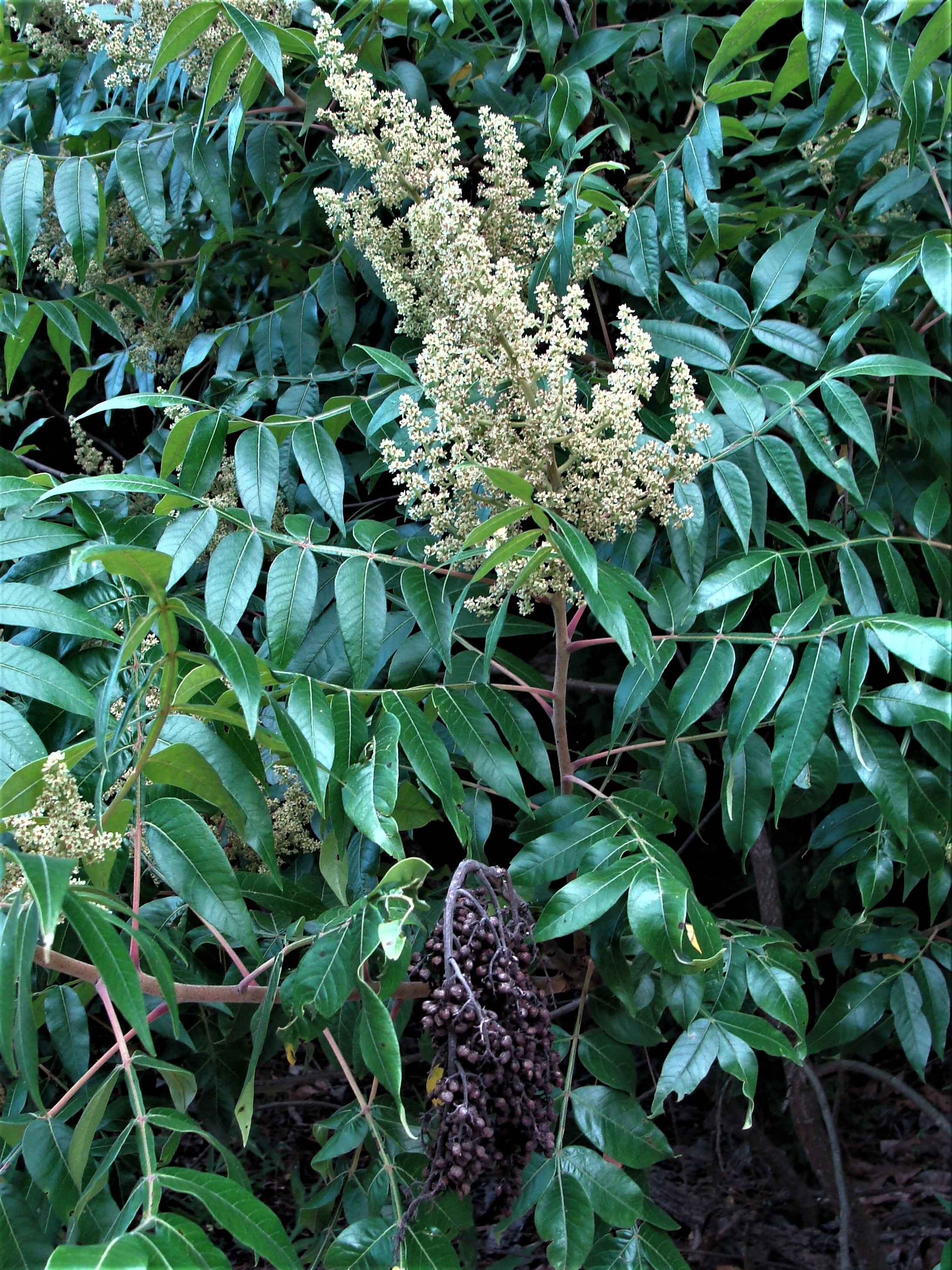



Female trees may produce large quantities of fruit on eventually drooping panicles. Clusters, 6+ inches long, persist into the following spring and remnants may persist into the second spring. The ovoid drupes, to 3/16 inch long, are reddish purple at maturity in mid-August and become brown and black as they shrivel over winter. Fresh drupes are covered with dense spiky white hairs. Tan smooth stones (to ⅛ inch across) have a flattened pea shape.

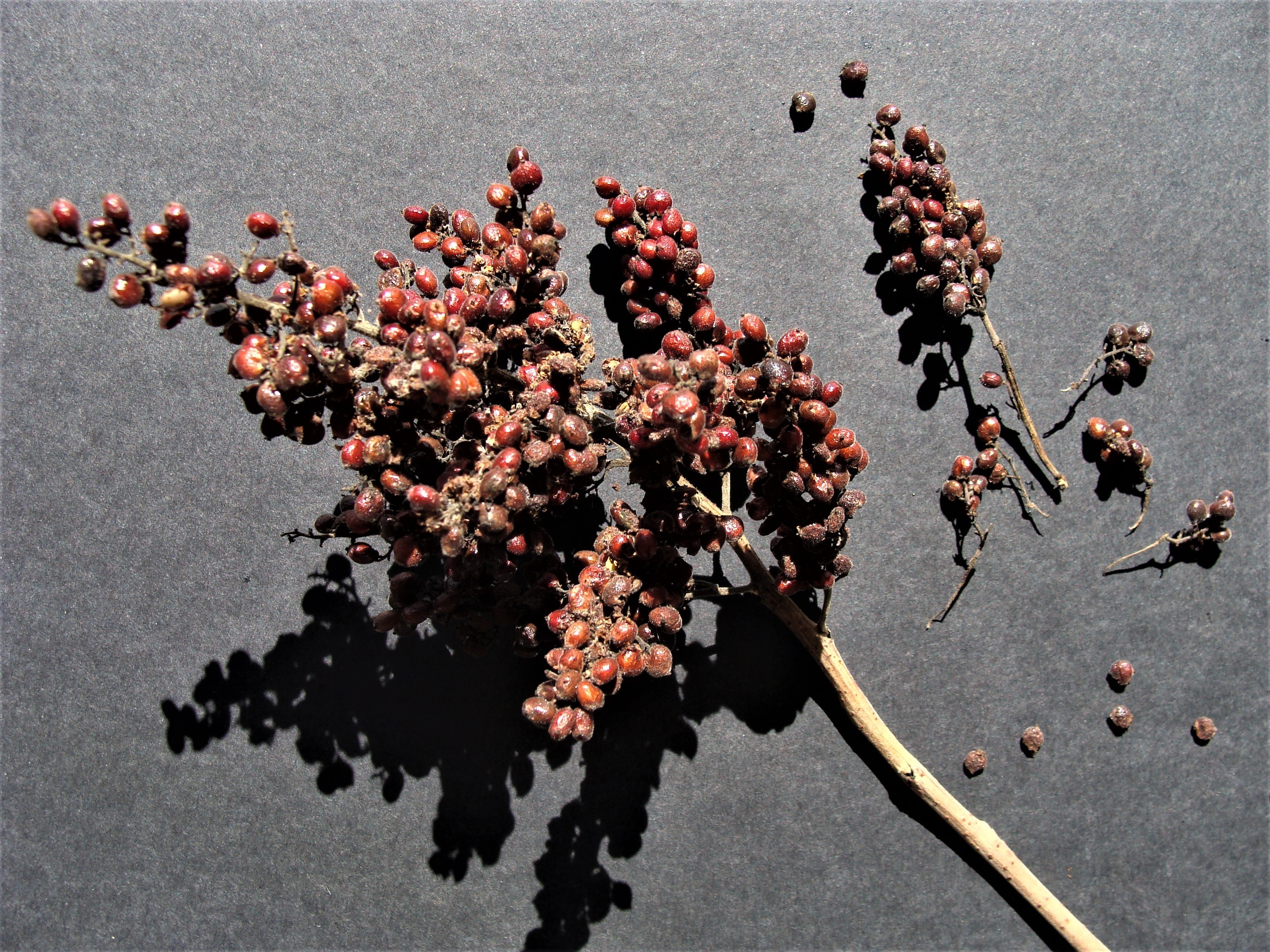

In considering Winged Sumac for a garden, there are a number of characters to recommend it: 1) an easily grown small tree with attractive green leaves, 2) copious showy panicles of tiny flowers that benefit insects, 3) fruits that are an important source of food for many birds and small mammals, and 4) excellent fall color. With pruning of lateral roots to remove excess root sprouts, a desirable ornamental plant may develop. Without root pruning, Winged Sumac is excellent for naturalizing larger areas and for erosion control on slopes. It may adapt to a container.
Four additional species or varieties of Rhus occur in Arkansas: 1) Fragrant Sumac (Rhus aromatica var. aromatica), 2) Tall or Midwestern Fragrant Sumac (Rhus aromatica var. serotina), 3) Smooth Sumac (Rhus glabra), and 4) Skunk-Bush Sumac (Rhus trilobata var. trilobata) (Little River County only). Only Smooth Sumac has similar leaves, inflorescence, and fruit. It can be distinguished by: 1) lack of wings along the leaf rachis, 2) fully serrated leaflets, and 3) upright mature fruited panicles.

*Some authorities have identified two varieties of Winged Sumac: 1) Eastern Winged Sumac (Rhus copallinum var. copallinum) which has 11-25 leaflets with attenuate bases and entire margins and 2) Western Winged Sumac (Rhus copallinum var. latifolia) which has 5-13 leaflets with rounded bases and margins that may be entire or serrate in their upper portion. The distribution of these varieties in Arkansas has not been well-mapped.
Article and photographs by ANPS member Sid Vogelpohl


